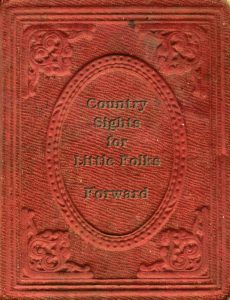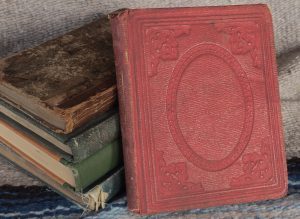 A while back I happened upon a small used book store in a strip mall. The commercial late seventies early eighties aluminum and glass facade held no promise of anything special. As I entered the store, the proprietor, seated behind the sales counter, acknowledged my entry by lifted her eyes briefly from the book she was reading. The long narrow store had bookcases along both side walls. Additional cases placed back to back down the center of the space bisected the store forming two isles. The shelves, filled with an eclectic assortment of volumes, were semi-organized by subject with boxes stacked along the floor in front of them. A children’s section was tucked into a little nook at the back of the store.
A while back I happened upon a small used book store in a strip mall. The commercial late seventies early eighties aluminum and glass facade held no promise of anything special. As I entered the store, the proprietor, seated behind the sales counter, acknowledged my entry by lifted her eyes briefly from the book she was reading. The long narrow store had bookcases along both side walls. Additional cases placed back to back down the center of the space bisected the store forming two isles. The shelves, filled with an eclectic assortment of volumes, were semi-organized by subject with boxes stacked along the floor in front of them. A children’s section was tucked into a little nook at the back of the store.
I slowly browsed the shelves and found a volume of Abraham Lincoln’s literary works. I had been looking for something of the type for a while so I was quite pleased with the find. The asking price was reasonable, so I tucked the book under my arm and continued my exploration of the store. I rounded the corner at the far end of the space and started working my way to the front of the shop. As I neared the sales counter, I noticed an unevenness in the floor. I looked to see what was under foot and found a ragged little book with no visible title.

The red cloth cover had an ornate blind stamp on both the front and back, and gold colored embossing on the spine. I opened the book and to my surprise, I found that it was a children’s book titled Country Sights for Little Folks. The 1857 publication date immediately caught my eye. I performed a quick mental calculation and realized the little book I held in my hand predated the Civil War. Not only that, but it preceded the presidency of the man whose works I held under my arm.
At this point, my imagination ran wild. I could see, in my mind’s eye, a father holding his child on his lap reading from this book the eve before leaving to fight in the civil war. The possibility of this imagined father never returning to his family filled me with sorrow, so I choose to believe a happy reunion took place several years later. Maybe the book traveled west by wagon on the Oregon, Overland or Santa Fe trails. Perhaps it was shipped by pony express to a dear relative living in the west. The book itself holds few clues to its 160-year history, only a few tantalizing time-worn pencil marks on its front end-paper, too faded to decipher.
The story within the covers is better documented. According to the June 1972 edition of Miniature Book News, the firms of Charles Tilt and Tilt & Bogue first published this story in England under the title of Country Walks for Little Folks circa 1835. It was part of a twelve title library called Tilt’s Handbooks for Children. American versions were published starting in the 1840s. I find no reference to when the title changed from Country Walks to Country Sights but there is a volume published in 1856 still titled Country Walks for little folks. If anyone knows more on the history of this title, let me know in the comments section below.
Even though this is a children’s book, it is remarkably detailed with engravings that follow along wonderfully with the text. Over all it gives a marvelous description of rural life in the early 19th century.
I invite you to join us as we post the entire book over the coming weeks.
PREFACE AND CONTENTS.
 Here is a pretty book, indeed.
Here is a pretty book, indeed.
For little girls and boys to read;
By Bradly bound, a man of taste,
And who to please you does his best.
You’ll understand these country scenes,
Although you are not in your teens.
The cuts they are so clear and plain,
With rhymes to teach, and entertain.
—That team returns from plough of course;
And there’s a cart without a horse;
And here’s a church, and there’s a dwelling,
And farmers next their money telling.
An angler now; haymakers then,
A loaded cart, and stacks and men.
Reapers and threshers, children playing:
Pray can you tell me what they’re saying?
Hogs in the wood; a bird-boy there;
And flogging walnuts, I declare?
Then mowing barley, winnowing corn,
And one man on a bridge forlorn!
The dairy-maid, the sower next
To see, you cannot be perplexed.
And there’s an Indian with her daughter,
And cattle driven forth to water;
And here’s a mill, and there’s a mill;
A market-cart, say what you will,
Drawn by an ass, I’m thinking that he
Will not mend his pace for patty.
The gleaners, woodmen, hares, and hounds,
The geese, the school, and school-room sounds
The ice, the hops, the girl, the shepherd,
The smith with soot and filings pepper’d;
The race, the rocks, the inn, the plough,
The sportsman, milkmaid and her cow,
Oh yes, we comprehend these scenes,
Although we are not in our teens!
